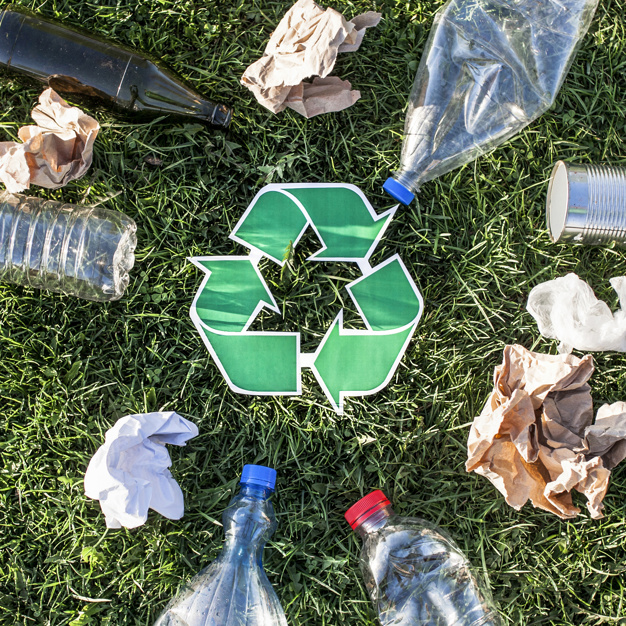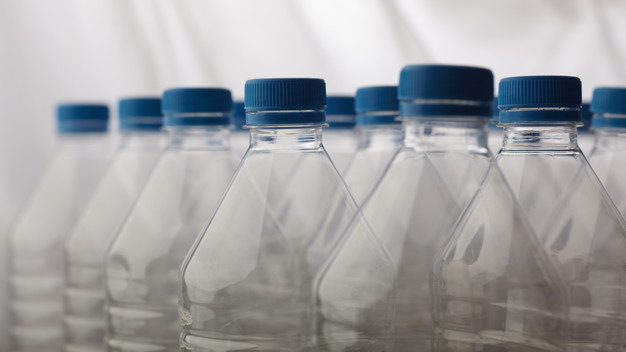
Reduce, Reuse, Recycle – Achieving Circularity
Over the past few years, there has been a far greater emphasis on living a ‘greener’, more eco-friendly lifestyle, and our waste management efforts play a significant role in this. We cannot stop waste production entirely, but everyone can make a significant contribution, by educating ourselves on best practices for handling this waste -Reduce, Reuse, Recycle.
Whatever the product/material whether there is food, plastic, glass, etc – there is always a circular solution. There is a 3 step process that can be implemented from the purchase to disposal, which will help us understand what is best. This process is often referred to as the 3 R’s – Reduce, Reuse, Recycle.
Step 1 – Reduce
A lot of waste that is produced is the result of excessive product, consumption, or purchase. Household food waste is one example, where over-purchasing and impulse buying lead to excessive amounts of food being thrown away. But food waste is not alone, a lot of packaging is used in great excess, which is leading to surplus packaging waste. Packaging which is far bigger than the product or just simply has no purpose or benefit, yet is still used, leads to a great build up of waste. This is where step one – reduce, comes into place.
Where possible we must try to reduce what we buy and what we use, this will help us, in turn, reduce the waste that is produced. Whether this means manufacturers and retailers need to use less packaging or package goods in a smarter way, or we as individuals need to plan better so items like food, clothes etc. do not get wasted or go unused.
Step 2 – Reuse
 Of course, reducing alone, will not end the waste issue altogether and not every item we use can be reduced – waste is going to be inevitable. This is where re-use (the 2nd step of our plan) comes into play. The term ‘single-use’ is often associated with items, which in fact can have a very long life span. Plastic bottles and bags are a great example, although dubbed as a single-use item, their robust and sturdy structure extends its capabilities far beyond this singular recommendation.
Of course, reducing alone, will not end the waste issue altogether and not every item we use can be reduced – waste is going to be inevitable. This is where re-use (the 2nd step of our plan) comes into play. The term ‘single-use’ is often associated with items, which in fact can have a very long life span. Plastic bottles and bags are a great example, although dubbed as a single-use item, their robust and sturdy structure extends its capabilities far beyond this singular recommendation.
When an item is about to be disposed of, it is important to think about if it can be re-used again, either in its original purpose or even giving the item a new purpose, for example, a takeaway tub can be reused for alternative storage. The majority of items that are disposed of could have been re-used, often hundreds of times before their performance gives out and then disposal is considered.
Step 3 – Recycle
There are a small minority of items/products that are only suitable for one use, or even if they have been re-use they will likely reach the end of their longevity eventually. Items like this will need to be disposed of, but the way in which this is carried out is the important final factor of our 3 step process – Recycle.
In order to turn our waste circular, we must recycle it appropriately & in the right way. There is only a small minority of items that can not be recycled, and thus go into the general waste and then to landfill. More and more items are now becoming recyclable, either through household collections, recycling banks, or specific recycling methods. When it is time to dispose of your waste, make sure you are correctly managing this rubbish – correctly recycling everything that can be, taking additional steps to clean or remove anything that can contaminate the batch. Landfill should always be considered a final resort – recycle or even donate your unwanted items, to help ensure they will then get a second life.
With the correct mindset, these 3 easy to follow steps (Reduce, reuse, recycle) will help us all live a more economical lifestyle, preserving the earth’s resources for the future.
Get in touch to find out more.